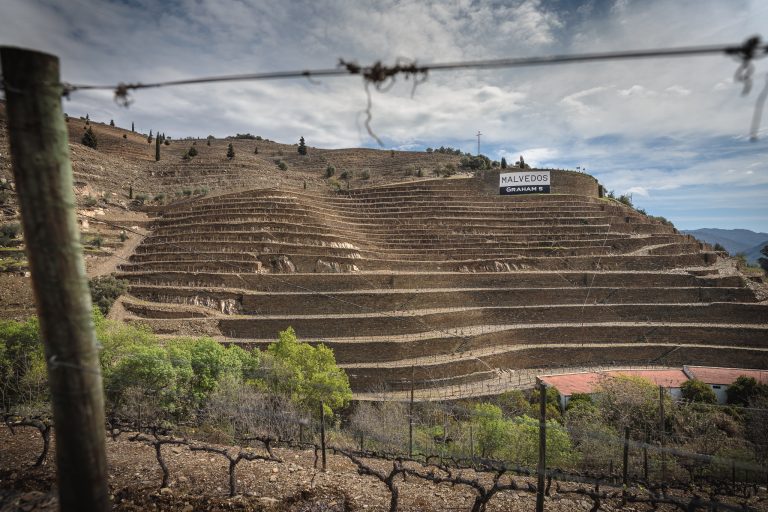Our website uses cookies in order to work correctly and to improve your browsing experience. By browsing this website, you agree to our Cookie Policy.
Grape Variety Libraries
Since we planted our first research vineyard at Quinta da Cavadinha in the Pinhão Valley in 1997, we have made significant advances in the study of Douro viticulture. Our experimental plantings have helped us identify the best combinations of vitis vinifera varieties for use in the Douro and the various American rootstocks onto which they are grafted as well as which combinations are best suited to specific vineyard sites. This research also helped us evaluate lesser-known varieties like Sousão and Alicante Bouschet, which we have subsequently planted in several other vineyards.
The Cavadinha vineyard was a stepping stone for our viticulture team to establish more ambitious grape variety research vineyards. Following years of meticulous planning and preparation we planted our first ‘grape variety library’ in 2014 at Quinta do Ataíde in the Vilariça Valley. This new vineyard contains 53 grape varieties (29 red and 24 white) with indigenous grapes from the Douro, from other regions of Portugal and a small number from other countries for comparative study. We selected the non-Douro varieties on the basis of their potential adaptability to Douro conditions.
Our overall objective is broadening the knowledge base of Douro and other Portuguese grape varieties to guide decisions around future plantings. Climate change has made this work particularly relevant and we are studying which varieties are most heat and drought resistant. Another important goal is safeguarding the preservation of less well-known varieties.
Two hundred vines of each variety are planted in two contiguous vineyard parcels covering 2.25 hectares of relatively flat land. The uniformity of the terrain evens out sampling variability that could influence the research, and the large size of the plant population enables us to undertake meaningful comparative studies. We have established research protocols with various universities and various scientific papers have already been published and shared in international conferences. Ongoing findings will be shared with other regional producers, benefiting the Douro as a whole.
In 2015, a second grape variety library with 31 varieties was established at Quinta do Bomfim, in the heart of the Douro Valley. This research field is laid out in the typical mountainous terrain more readily associated with the Douro and complements the Ataíde library. Taken together, the two research fields take into account the varying conditions of the Douro’s micro-terroirs, allowing for data extrapolation that is representative of the region as a whole.
Our third grape variety library is the Tapadinha vineyard, planted in 2015 close to Quinta do Retiro in the Rio Torto Valley. The site was chosen largely because of its altitude and it only contains white grape varieties (11). We planted 700 vines of each variety to enable sizeable vinifications to explore the potential for the production of high quality dry white wines.



